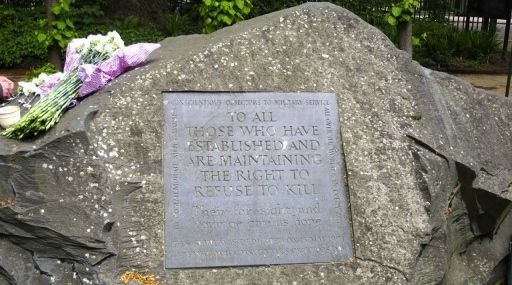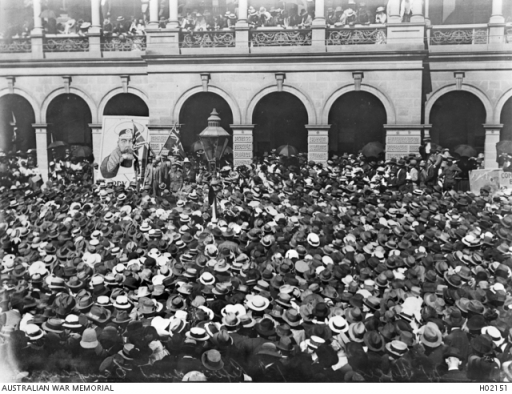Australians rejected a proposal to introduce compulsory military service overseas in a referendum, or plebiscite, held on 28 October 1916.
Prime Minister Billy Hughes called the vote in response to shortages of men as the First World War went into its third year.
In the wake of the Gallipoli campaign, Australian troops joined the Allied Western Front offensive in the summer of 1916, suffering thousands of casualties at the Battle of the Somme.
Conscription provoked heated debate, and the Australian Government’s move was narrowly defeated. For more, see the Australian War Memorial website.
Britain, the Commonwealth & Conscription
Unlike the conscript armies of France, Germany and Russia, British and Dominion forces relied on voluntary enlistment at the outset of the Great War, supported by intensive recruiting campaigns.
The UK Government broke with tradition as the need for more men grew increasingly acute, getting legislation through Parliament in January 1916 to introduce the call-up for single men aged 18-41.
Britain’s Military Service Act also included the right to claim exemption on grounds of conscience.
 Memorial to conscientious objectors, Tavistock Square, London (Photo: Centenary News)
Memorial to conscientious objectors, Tavistock Square, London (Photo: Centenary News)
Also in Centenary News:
Conscientious objection & dissent – New Zealand WW1 study
100 Years Ago – Britain introduces conscription
Images courtesy of the Australian War Memorial-HO2151/public domain); Centenary News (conscientious objectors’ memorial)
Sources: Australian War Memorial, Wikipedia
